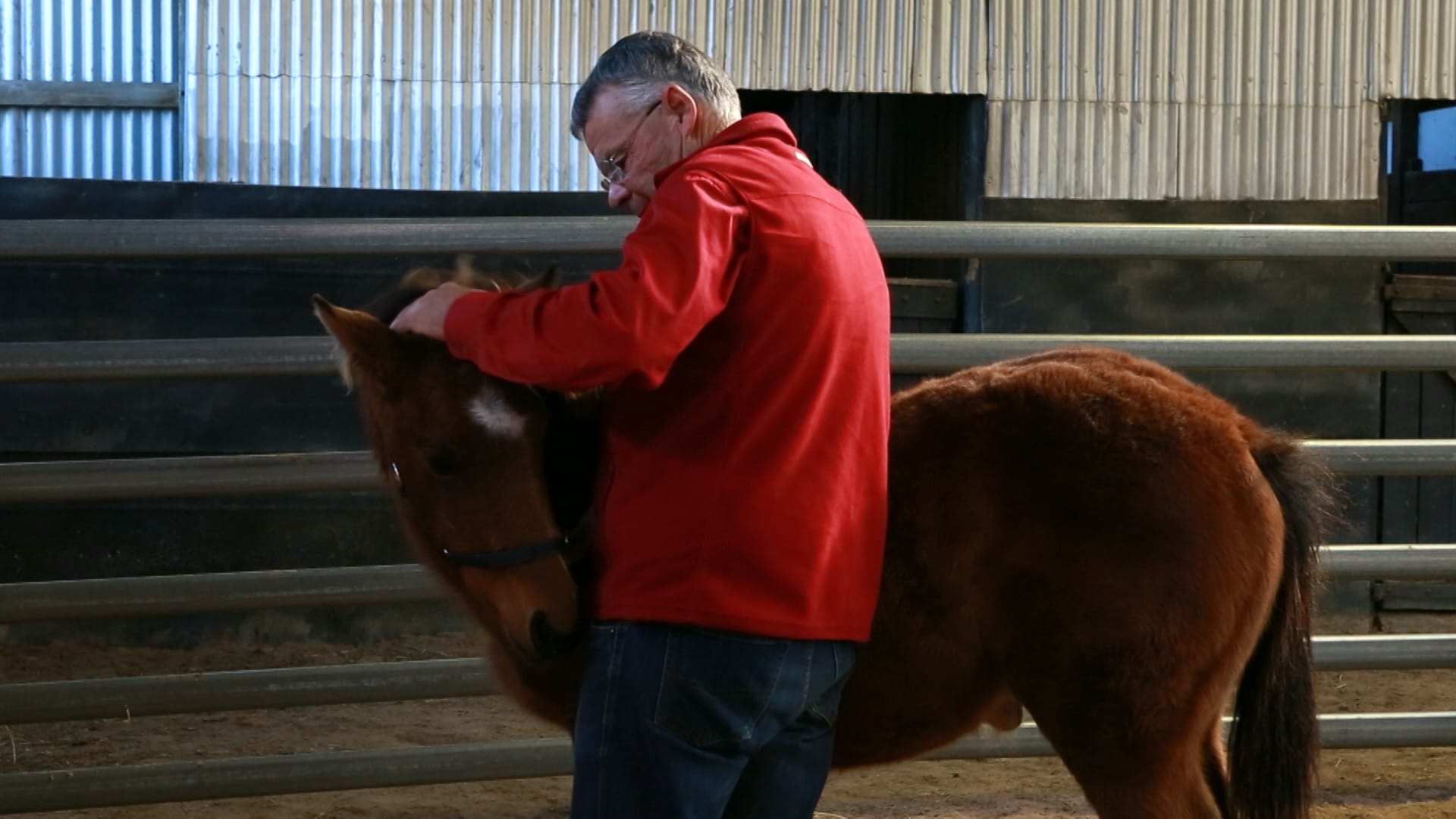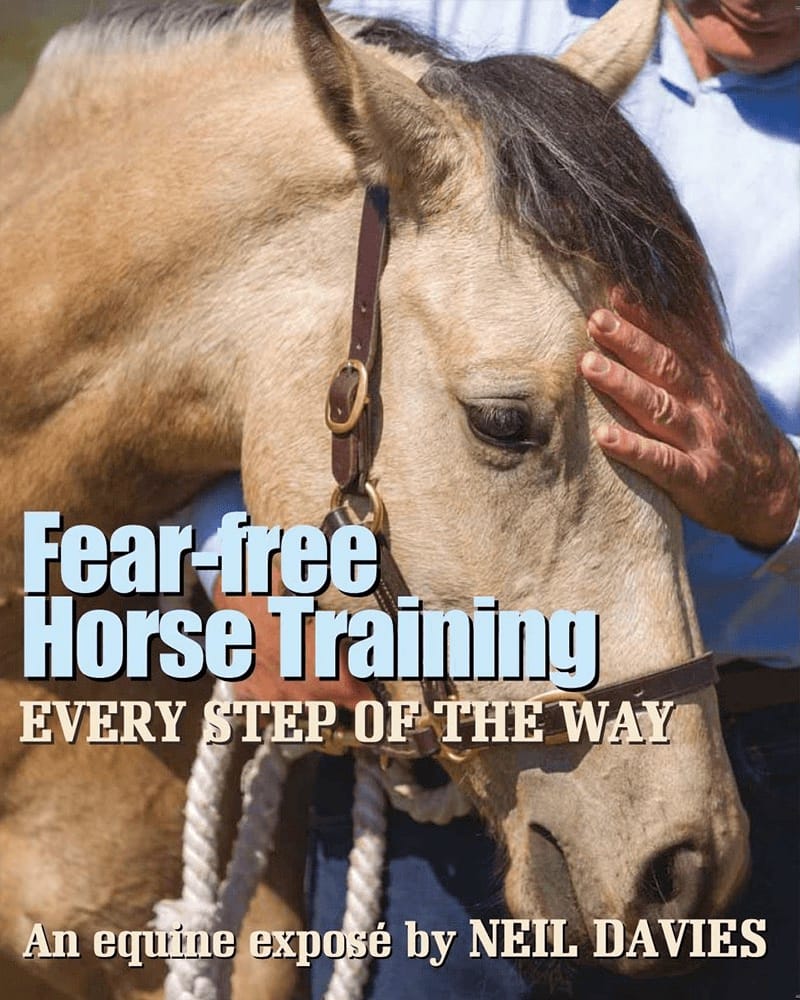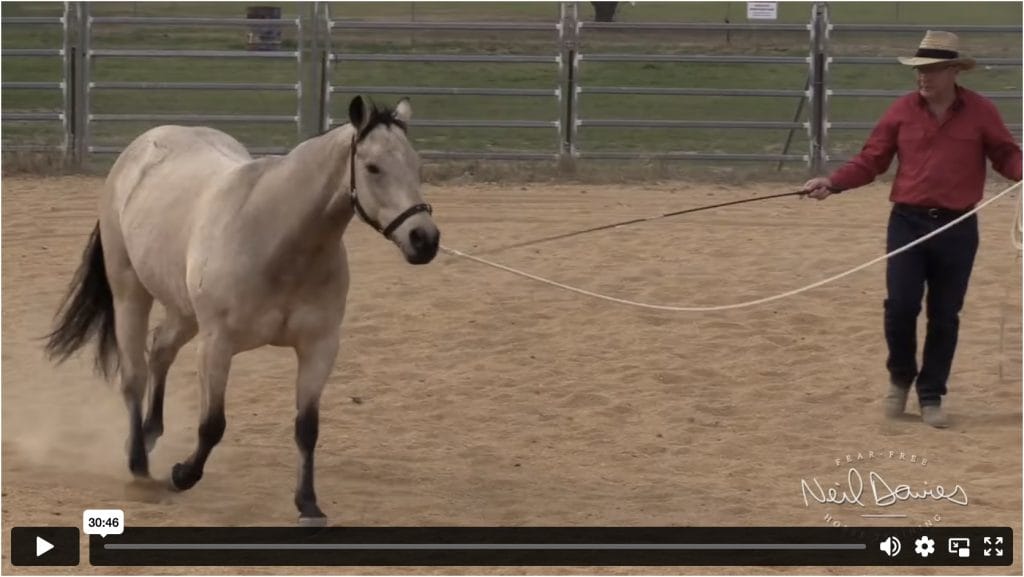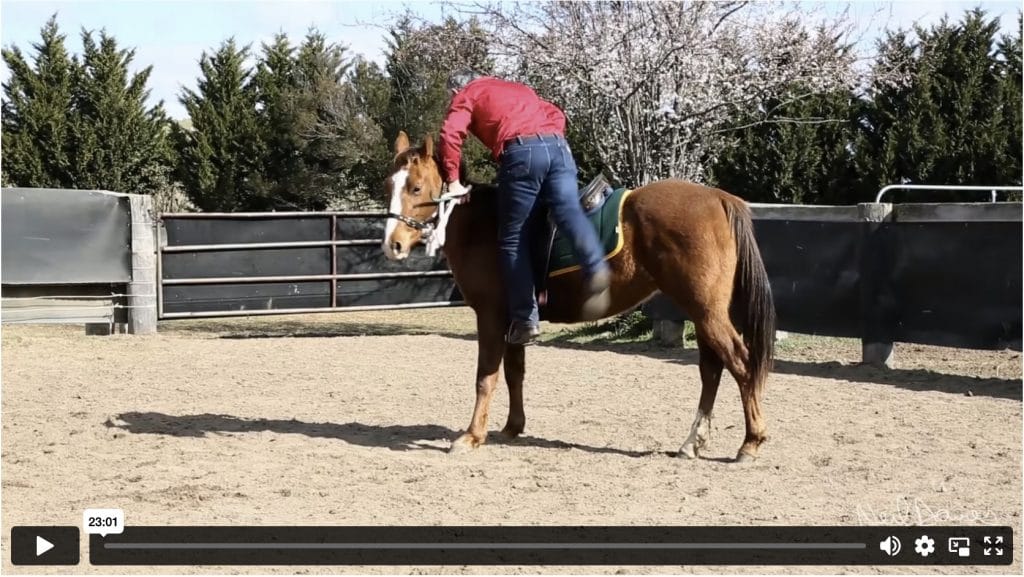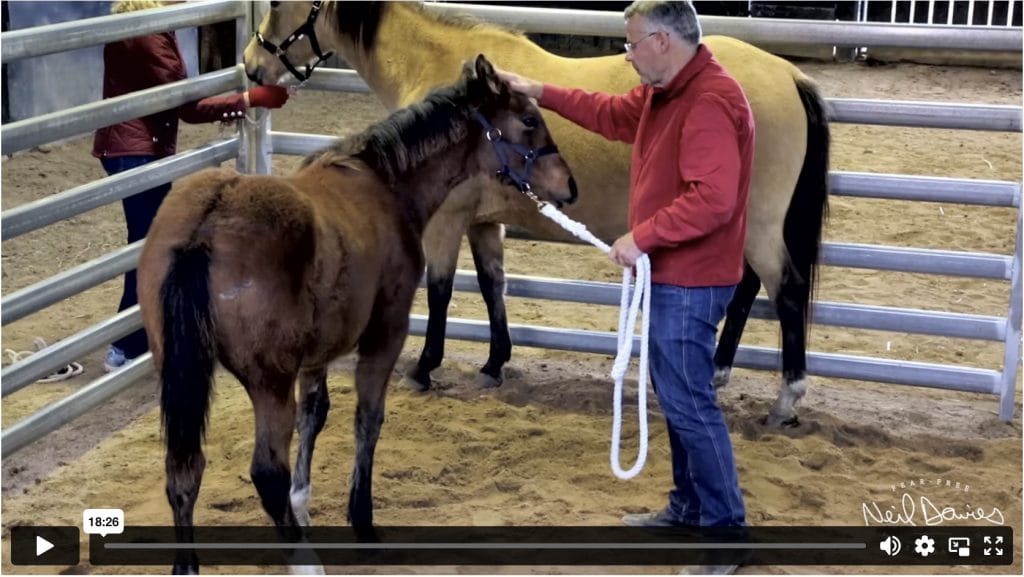Many horse trainers make lots of money selling all sorts of gadgets and widgets.
You can buy ‘special’ lasso ropes to catch your horse and ‘special’ halters to make him ‘respect’ you.
There are the ‘special’ sticks with magic powers, all sorts of bridles to solve all sorts of problems and halters to ‘cure’ a horse that bucks.
There’s even a dummy to tie onto your horse’s back if you’re too scared to mount.
Then there’s the endless array of bits.
One for a horse’s first bridling, another to use in his early lessons.
‘Special’ bits to make a horse stop and others to make him turn.
There are bits with levered shanks, twisted wire mouthpieces, severe spoons in a horse’s mouth and chains under his chin.
There are pelhams and double bridles of all shapes and sizes used in dressage and English classes.
People think that because these bits have been used for hundreds of years, they must have some mystical powers.
People think what was done a hundred years ago must still be done today.
Thinking like this blocks any hope of change and improvement.
Consider the advances in science, medicine, transport, engineering and all human endeavour, during the last hundred years.
Would anyone treat an infection with the same remedy that was used a hundred years ago?
I don’t think so.
Yet some horse people argue that we should keep doing the same thing with our horses because ‘that’s the way it’s always been done.’
It’s time to cast off old ideas, old wives tales and a lot of unnecessary gear.
You don’t need expensive equipment to train your horse.
Spending hundreds of dollars on gadgets and widgets won’t make you a better horse-person.
To catch an unhandled horse for the first time, you need a soft cotton rope about eighteen feet long, with a metal ring attached at one end.
Cotton rope is softer than nylon on a horse’s neck and cotton rope won’t burn your hands.
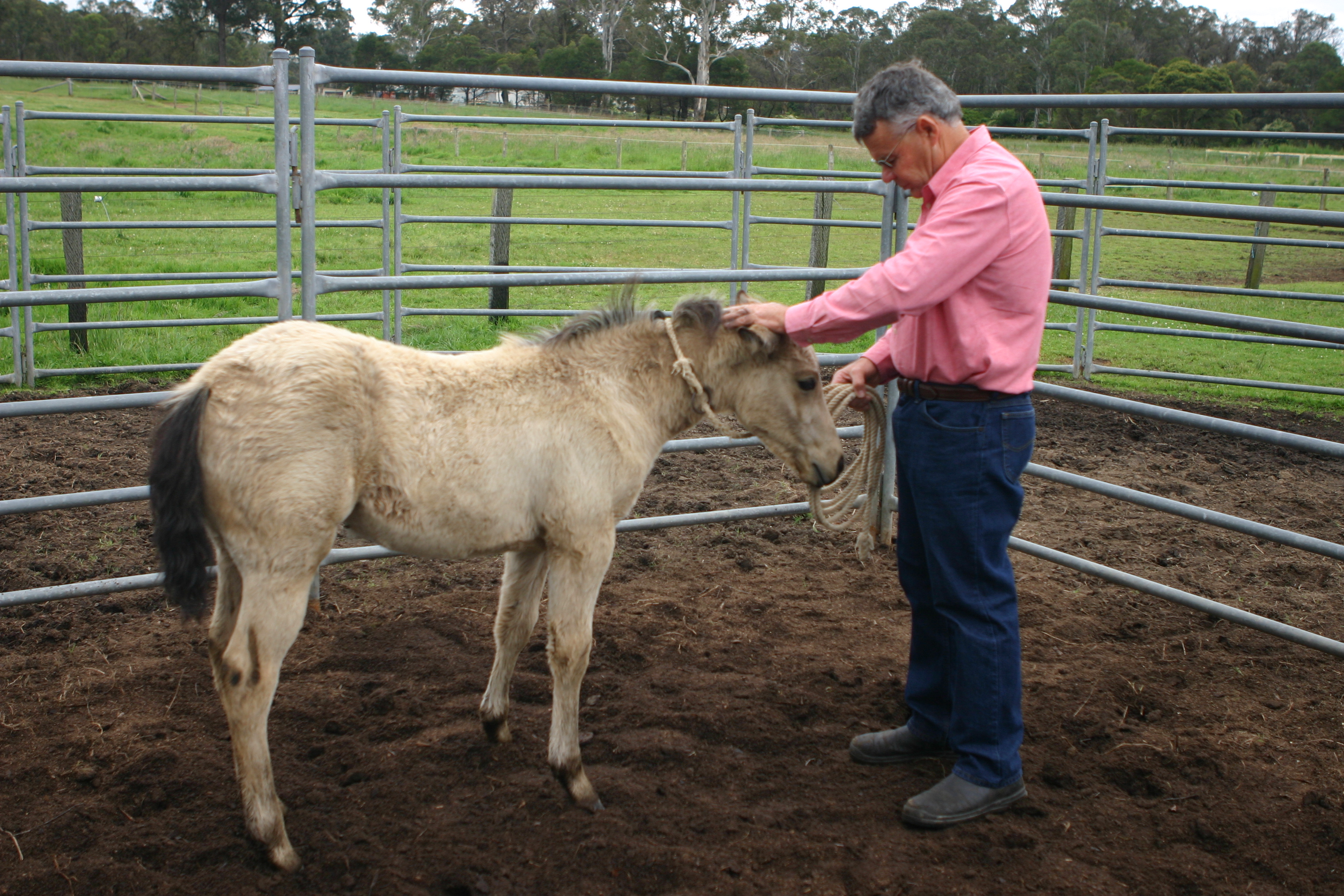
A soft cotton rope is used to catch this foal for the first time.
Next, you need a plain headstall and a cotton lead rope.
A nylon lead rope will burn your hands if your horse pulls away.
Cotton won’t.
Rope halters are far too severe.
I’ve seen too many horses with skin off their nose or under their jaw from the use of these halter.
You also need a stick about six feet long, so you can apply pressure at a horse’s rear end when you stand in front of him.
Use it to tap your horse’s rump to teach him to move forward.
A buggy whip is ideal but it must never be used for whipping.
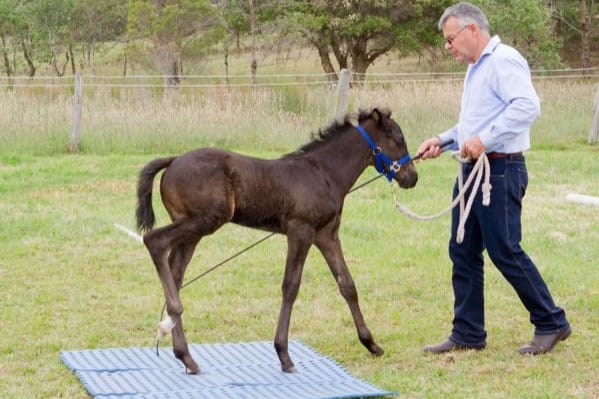
A plain bridle with a loose-ring snaffle bit is all you need to teach any horse anything.
I use rubber cheekers on the bit to prevent rubbing or chafing the horse’s mouth.
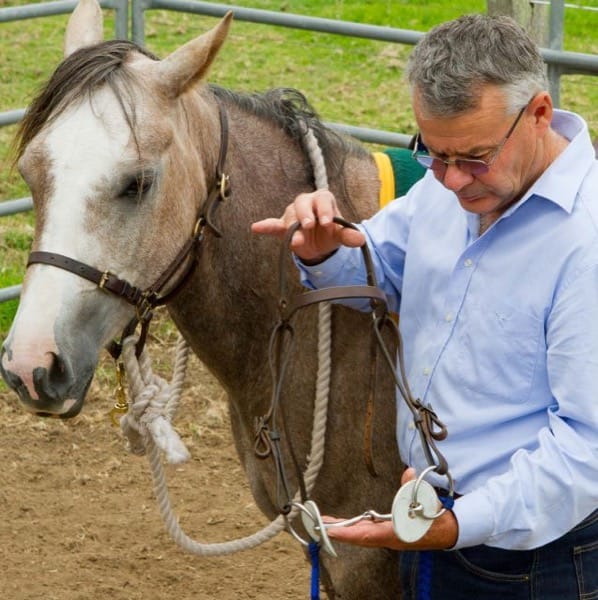
I grew up riding in Australian stock saddles and they are my preference.
I use a lightweight Australian saddle for most training.
I also use a dressage saddle.
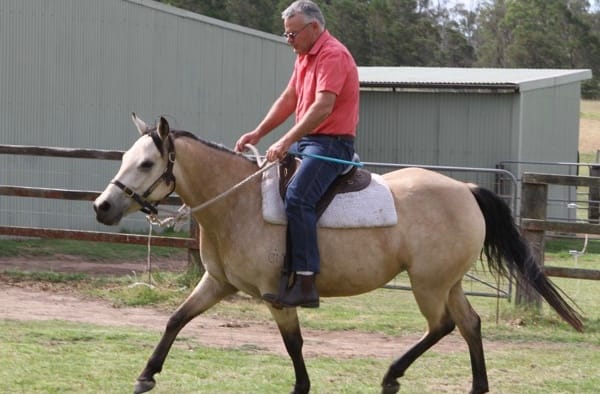
In a young horse’s initial training, a piece of plastic garden hose helps to teach him to move forward.
I use blunt spurs later on in a horse’s training.
So there you have it.
All the gear you need to teach any horse anything.
You don’t need much and you don’t have to spend hundreds of dollars.
I forgot one thing.
You must use your brain.
After all, you are the teacher.
If your lesson’s not working, blame yourself and try to see every situation from your horse’s point of view.

